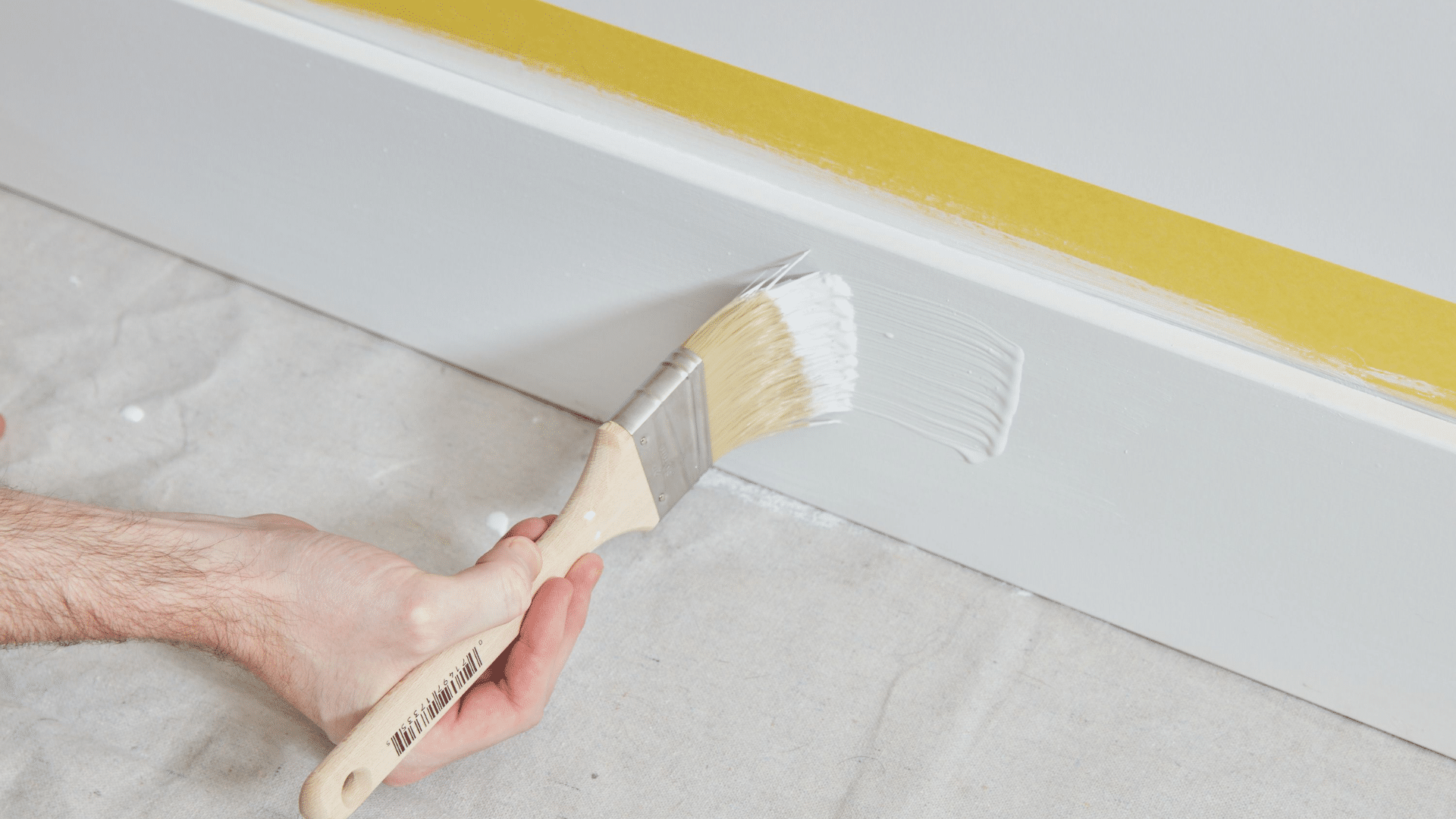Your trim and baseboards frame every room in your home, yet they often go unnoticed-until they start looking shabby. These small surfaces take constant abuse from shoes, vacuums, pets, and everyday life.
Using standard wall paint on these areas is a recipe for quick failure and frustration. The right paint for these small but mighty surfaces can make or break your home’s overall look.
But not all options are equal. Some dry too slowly, others chip too easily, and many don’t provide that clean, sharp line where walls meet trim.
The secret lies in knowing which formulas stand up to daily wear, apply smoothly across detailed surfaces, and create that crisp visual edge that makes rooms look finished and polished.
Here, we’ll show you how to select the perfect paint for your trim and baseboards, which brands truly deliver, and the simple steps to apply it like a professional.
Why Trim and Baseboard Paint Needs to Be Special
Trim and baseboards need special paint for three key reasons:
- Constant contact zones make trim vulnerable to damage from vacuums, shoes, pets, and kids. Regular paint would chip quickly in these high-traffic spots.
- Detail work needs smoother finishes than walls. Trim has smaller surfaces where flaws are more noticeable. Trim paint flows better and creates a more uniform surface without brush marks.
- Visual framing is what trim does for your room. Good trim paint enhances contrast between walls and edges, making rooms look sharp and well-defined while resisting yellowing.
The special formulas might cost more initially, but save money by lasting longer where you need durability most.
What Type of Paint Is Best for Trim and Baseboards?
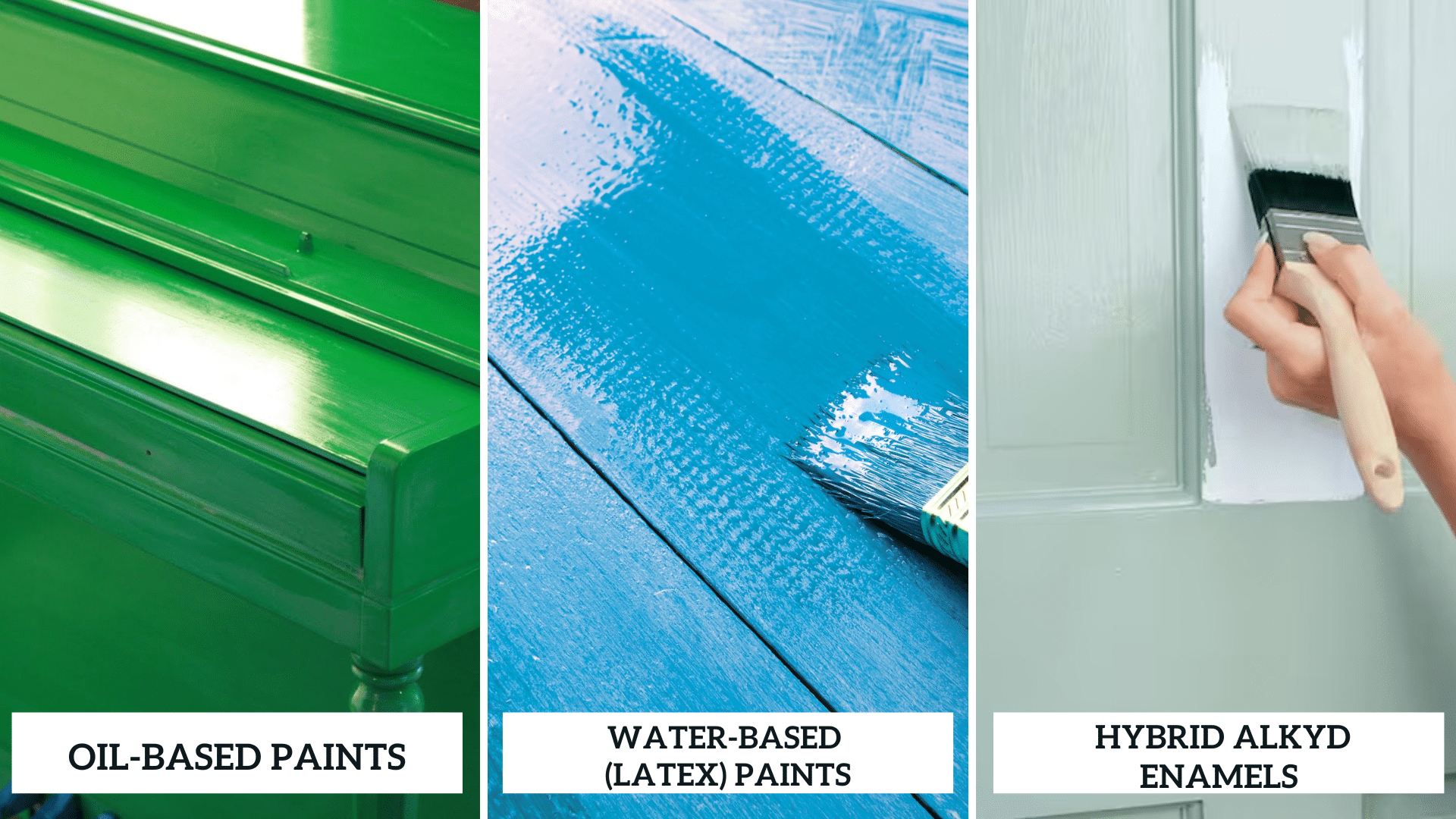
When choosing paint for trim and baseboards, you have three main options, each with its own benefits:
1. Oil-Based Paints
Oil-Based Paints offer amazing durability and a smooth finish that’s hard to beat. They create a durable surface that withstands scrubbing and bumps.
The downside? They take longer to dry, emit strong smells, and require harsh cleaning chemicals. Still, many pros prefer these for the glass-like finish.
2. Water-Based (Latex) Paints
Water-Based (Latex) Paints have come a long way in recent years. Modern formulas now offer much better durability than older versions.
The big advantages: fast drying time, simple cleanup with just water, and much less odor. For most homes, today’s quality latex trim paints work very well without the hassles of oil-based options.
3. Hybrid Alkyd Enamels
Hybrid Alkyd Enamels give you the best of both worlds. These newer paints combine the toughness of oil-based paints with the easy cleanup of water-based ones.
They flow and level like oil paints but clean up with water. They cost more than regular latex but less than premium oil-based paints.
For most homeowners, a hybrid alkyd or high-quality latex paint offers the best combination of durability, ease of use, and results. Oil-based paints still have their place in high-wear areas or when you want that classic, ultra-smooth look.
What Should You Look for in Trim Paint?
When shopping for trim paint, focus on these key features to get the best results:
| Feature | Why It Matters | What to Look For |
|---|---|---|
| Adhesion to Glossy Surfaces | Trim often has a slick finish that ordinary paint can’t stick to. | Look for “for glossy surfaces” or “high-adhesion” formulas |
| Stain & Scratch Resistance | Trim and baseboards endure constant contact with shoes, furniture, and toys. | Labels that say “scuff-resistant,” “high-durability,” or “enamel” |
| Low-Odor / Low-VOC | Trim painting is often done indoors while living in the space. | Low-VOC or low-odor designations for safer indoor use |
| Easy-to-Clean Finish | Trim collects dirt easily and must be wiped clean frequently without damaging the paint. | Avoid flat paint; prefer semi-gloss, satin, or gloss finishes |
| Sheen Preferences | Affects both appearance and performance: shinier finishes are more durable and easier to clean. | Semi-gloss (most popular), satin (subtle), high-gloss (boldest) |
The right trim paint might cost more per gallon, but you’ll use less of it than wall paint. The extra cost is worth it for paint that applies smoothly, dries to a hard finish, and keeps trim looking fresh for years.
Best Paints for Trim and Baseboards (Top Brand Recommendations)
Not every paint brand delivers the same quality for trim work.
Here are the top performers that professional painters rely on and homeowners love, organized by price point and specific needs.
Premium Choices for a Professional Finish
These high-end options cost more but pay off with outstanding results that last longer and look better than budget alternatives.
Sherwin-Williams Emerald Urethane Trim Enamel
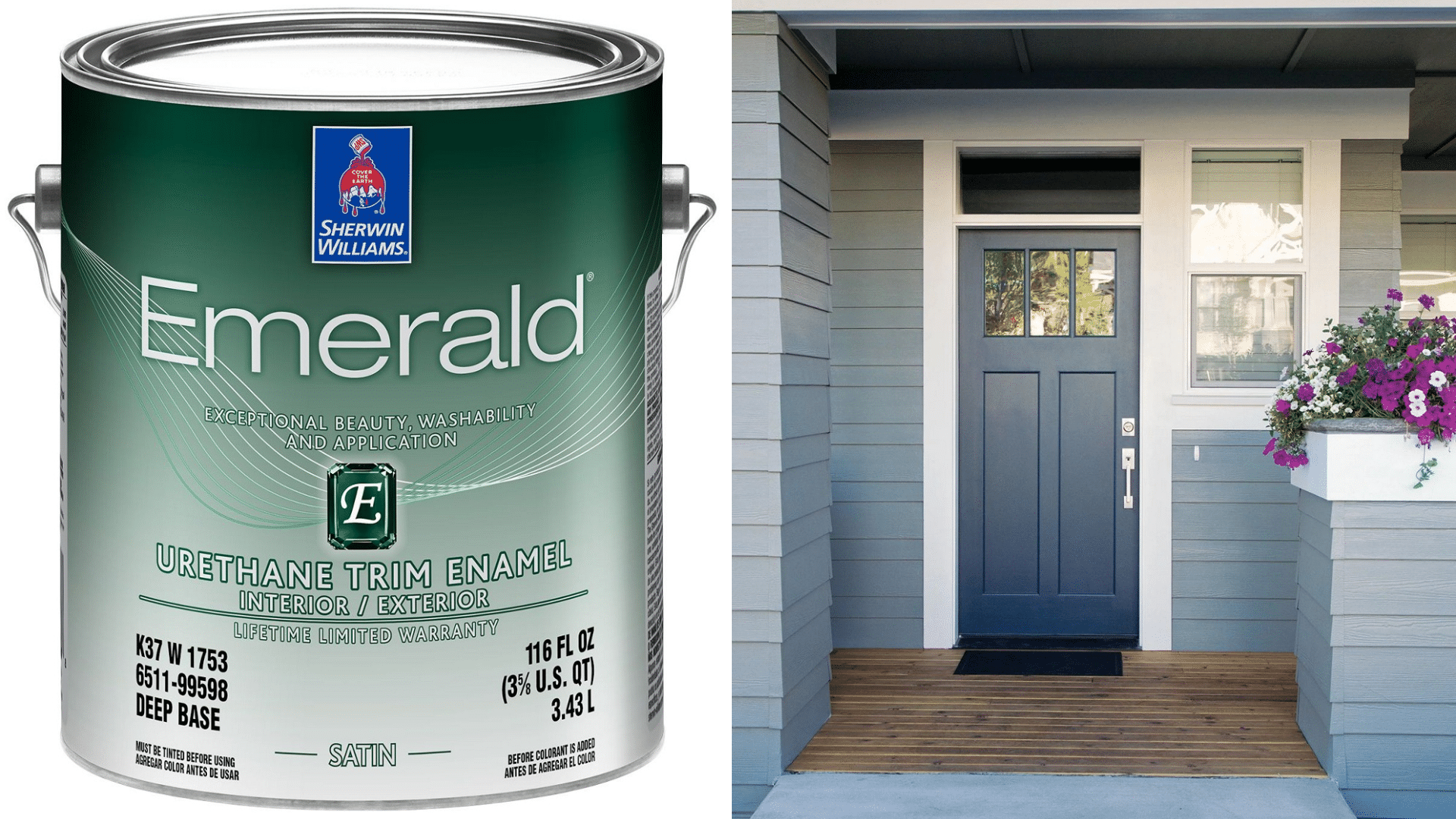
Sherwin-Williams Emerald Urethane Trim Enamel stands out among professional painters for good reason. It offers excellent leveling for a glassy finish that hides brush marks almost completely.
Try this if: You want long-lasting trim paint that looks professionally applied, especially for white trim that needs to stay bright.
Benjamin Moore Advance Interior Paint
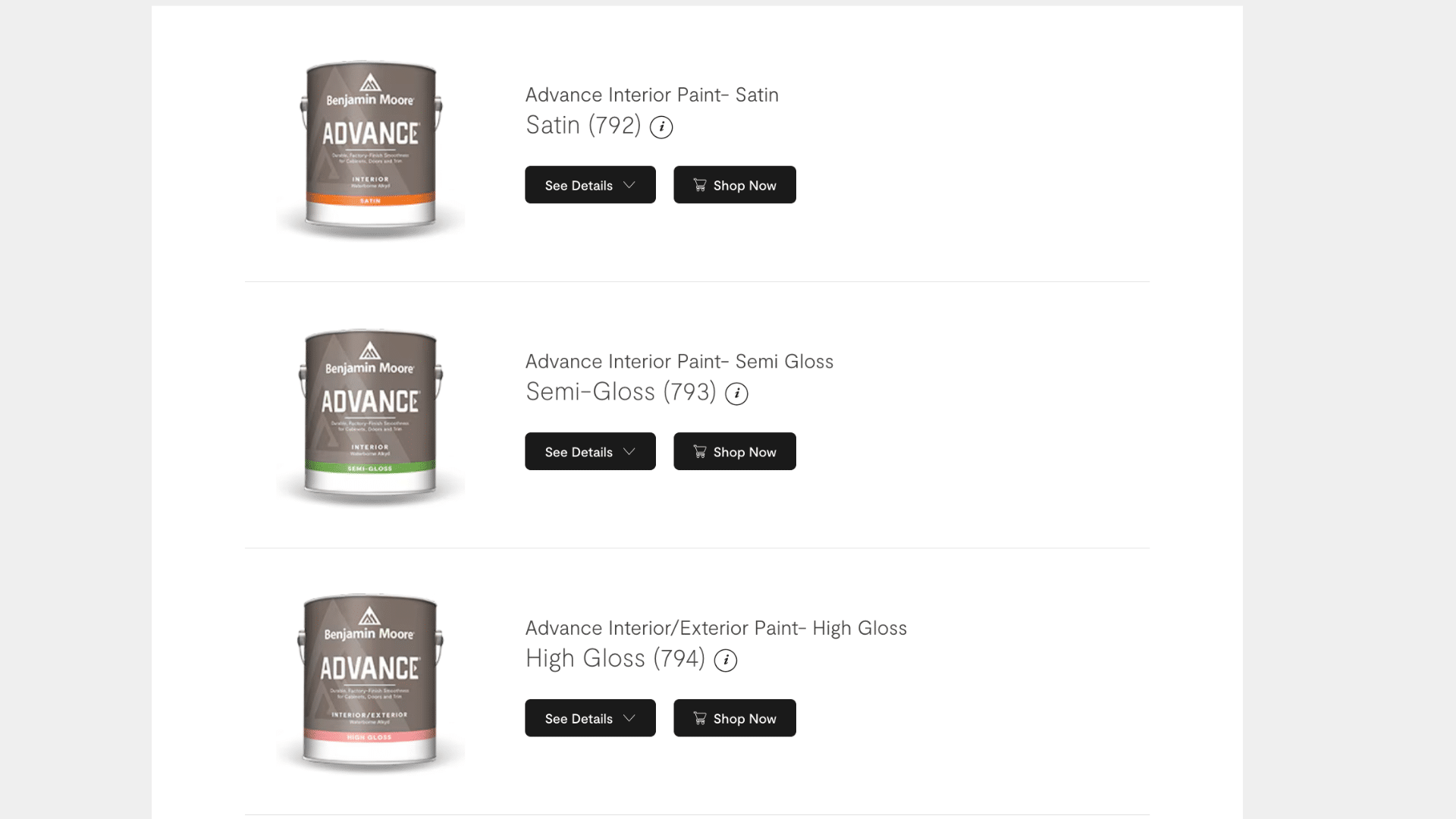
Benjamin Moore Advance Interior Paint features a waterborne alkyd formula that combines the best qualities of different paint types.
It flows like oil paint but cleans up like latex—a perfect mix. Its self-leveling properties mean brush marks disappear as it dries. With low-VOC content, it’s a smart choice for indoor spaces where air quality matters.
Try this if: You want the look of oil-based paint without the cleanup hassle, or if indoor air quality is a concern for your family.
Great Value and Easy Application
These wallet-friendly options offer a good balance between price and performance, perfect for larger projects or first-time painters.
Behr Premium Plus Ultra
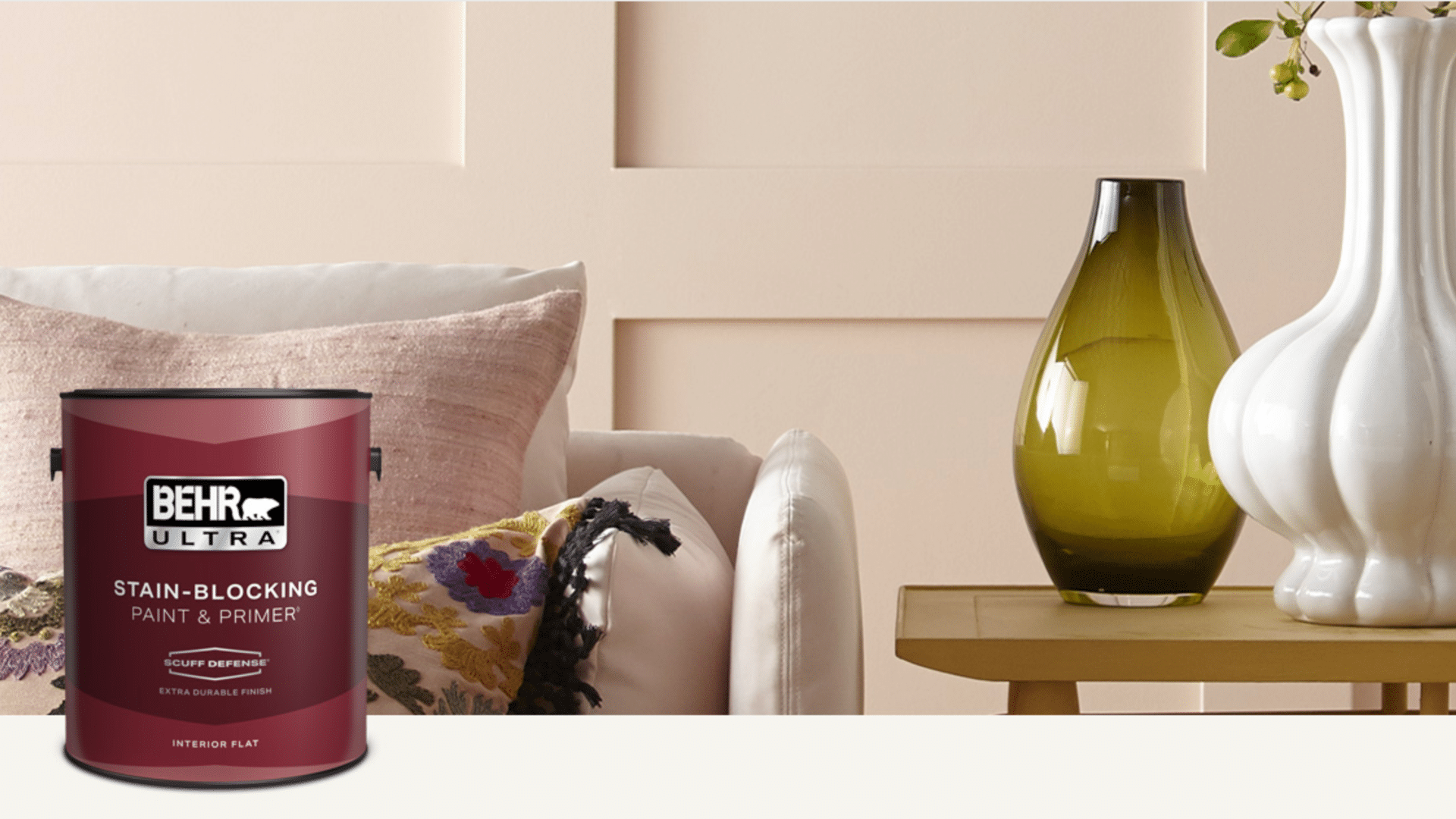
Behr Premium Plus Ultra makes a solid choice for DIYers watching their budget. Its built-in primer means you’ll need fewer coats in most cases, saving time and money.
It offers good stain resistance, standing up to the occasional scuff without showing damage. While not as fancy as premium brands, it delivers quality results without the premium price tag.
Try this if: You’re painting all the trim in your house and need a cost-effective option that doesn’t sacrifice too much quality.
Valspar Cabinet & Furniture Oil-Enriched Enamel
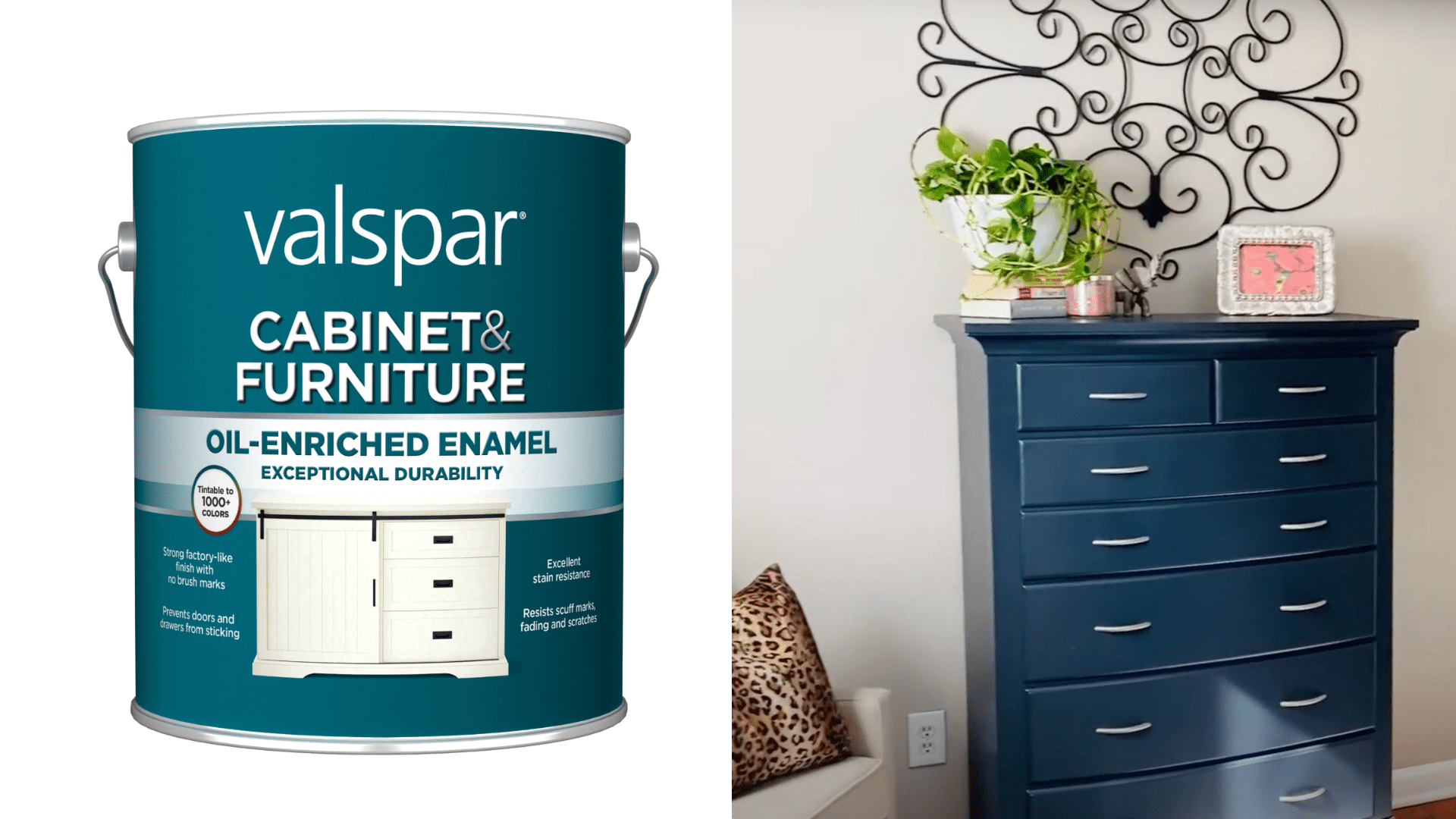
Valspar Cabinet & Furniture Oil-Enriched Enamel applies smoothly with fewer brush marks than typical paints.
First-time painters appreciate how easy it is to control, helping them achieve more professional-looking results. Its moderate price point makes it accessible for whole-house trim projects.
Try this if: This is your first trim painting project and you’re worried about getting a smooth finish without lots of experience.
Specialty and Problem-Solver Picks
When standard paints won’t work for your specific situation, these specialized formulas address common challenges like humidity or difficult surfaces.
Zinsser Perma-White Mold & Mildew Resistant
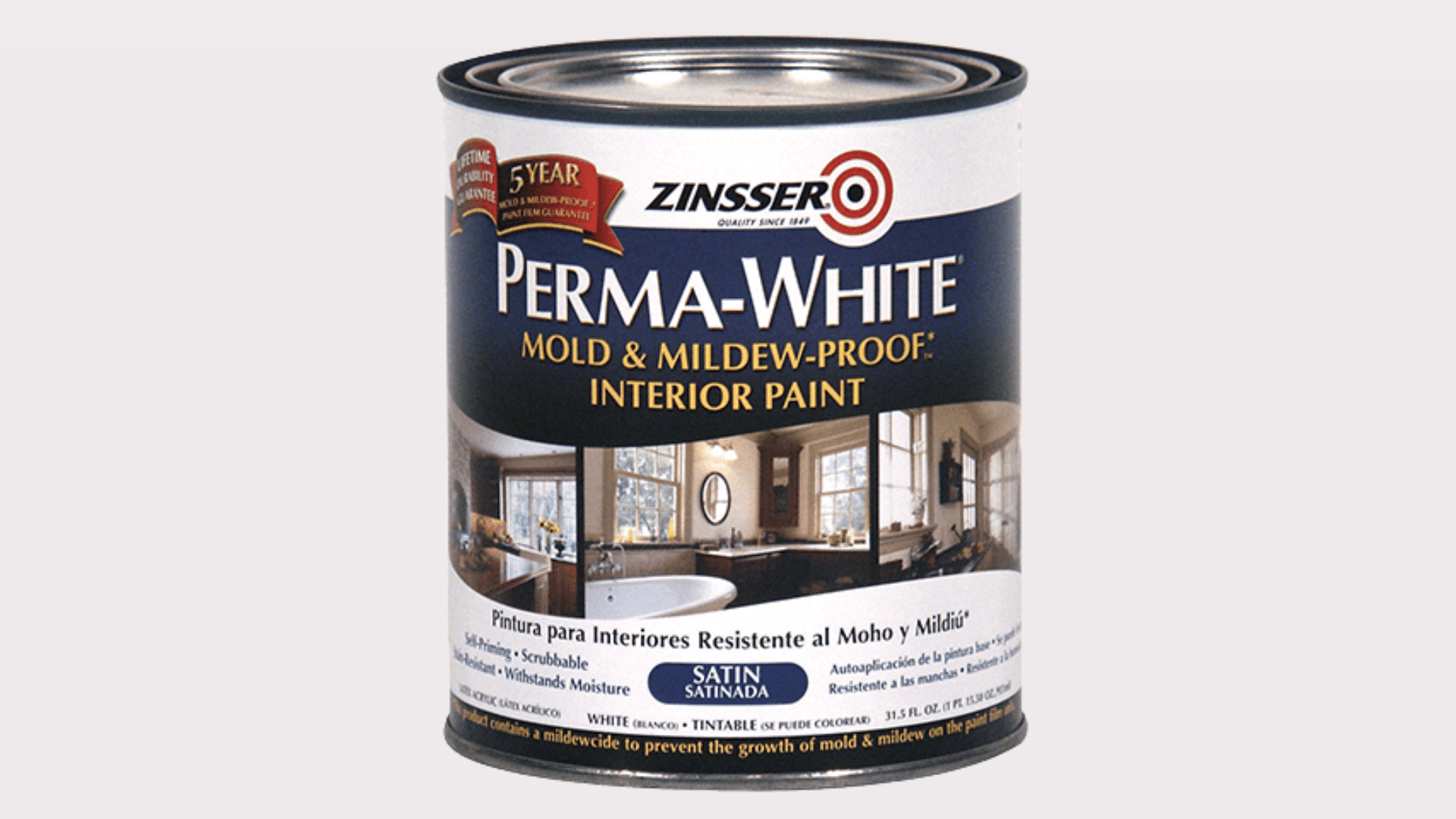
Zinsser Perma-White Mold & Mildew Resistant paint works wonders in bathrooms, kitchens, and laundry rooms where moisture is common. Its mold-fighting formula keeps trim looking clean in damp areas where other paints might fail.
Try this if: Your bathroom or kitchen trim tends to show mildew spots, or you live in a humid climate where moisture is an ongoing issue.
Farrow & Ball Full Gloss
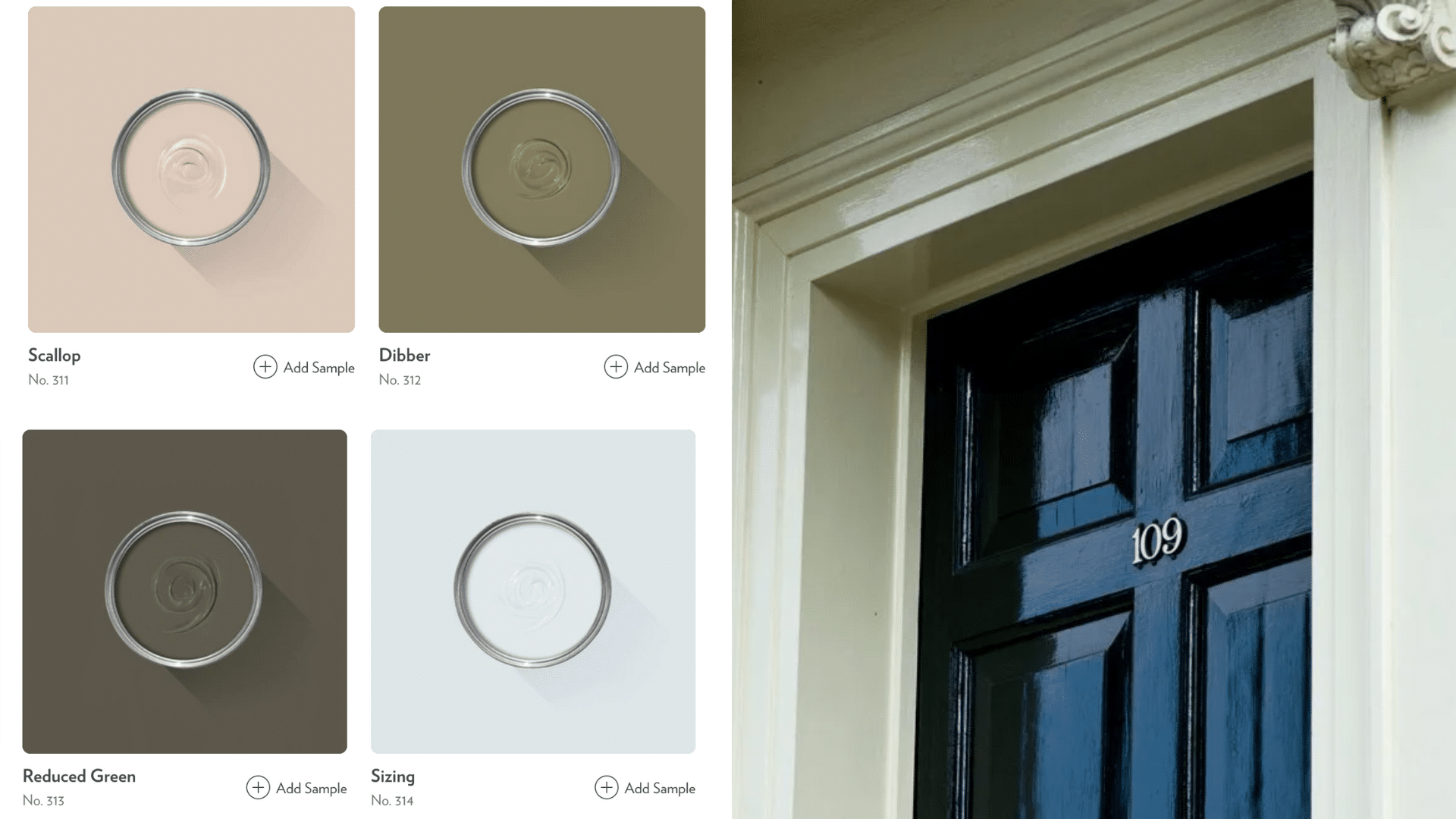
Farrow & Ball Full Gloss offers a luxury finish with ultra-high shine that makes a statement.
Though pricey, its low-VOC formula and designer-approved colors make it perfect for historical homes or standout accent trim.
Try this if: You’re working on a small, high-impact area where the extra cost is worth it, or restoring a period home where authentic finishes matter.
INSL-X Cabinet Coat
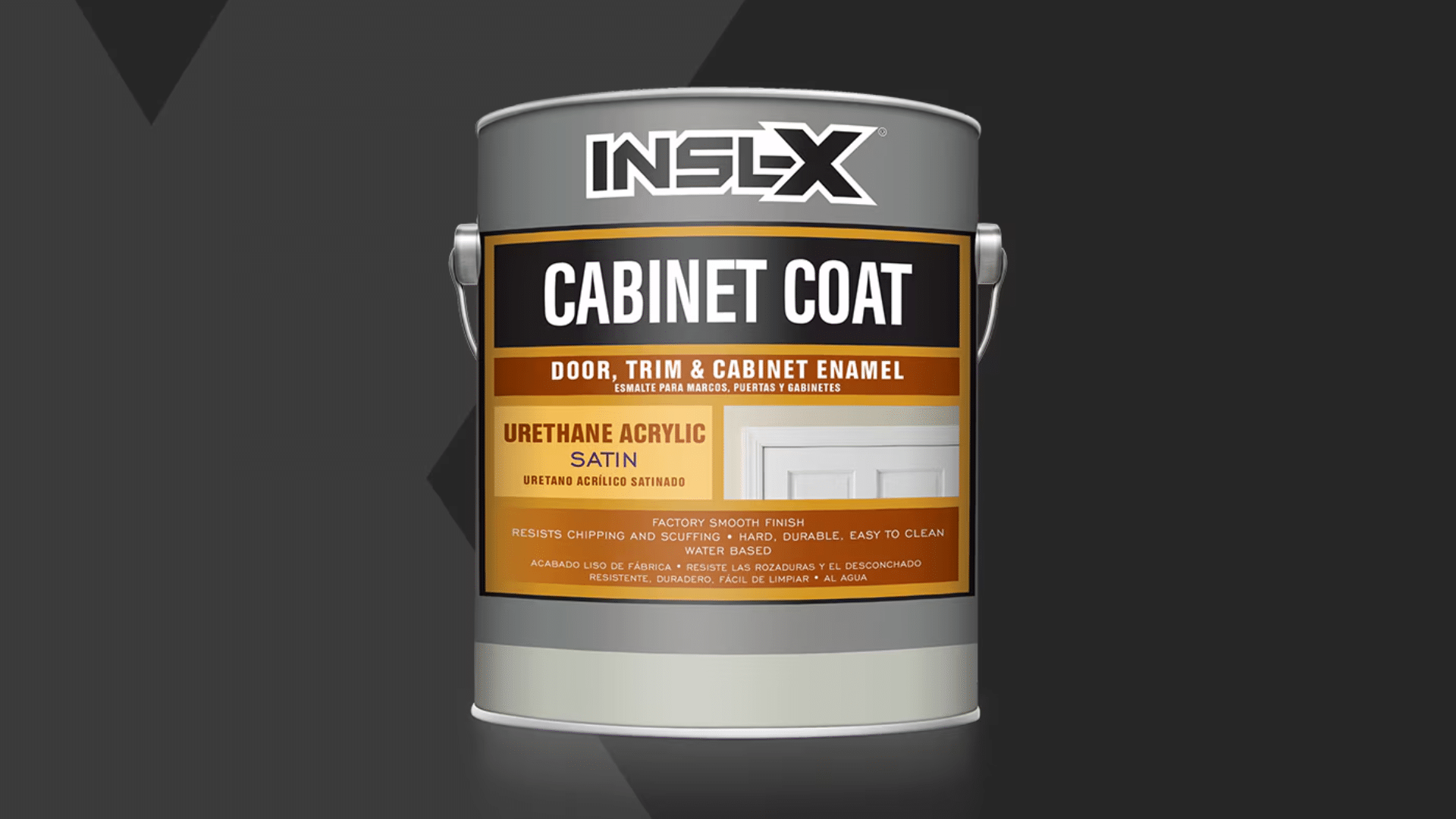
INSL-X Cabinet Coat includes a bonding primer that sticks to hard surfaces with minimal prep work. It’s specially made for trim, doors, and furniture, creating a smooth, hard finish even when you can’t sand thoroughly first.
Try this if: You’re painting over existing glossy trim and want to minimize the tedious prep work, or if dust from sanding would be a problem in your space.
The right paint depends on your specific needs – choose premium options for high-visibility areas, budget picks for large projects, and specialty formulas for unique challenges.
How to Paint Trim and Baseboards Like a Pro
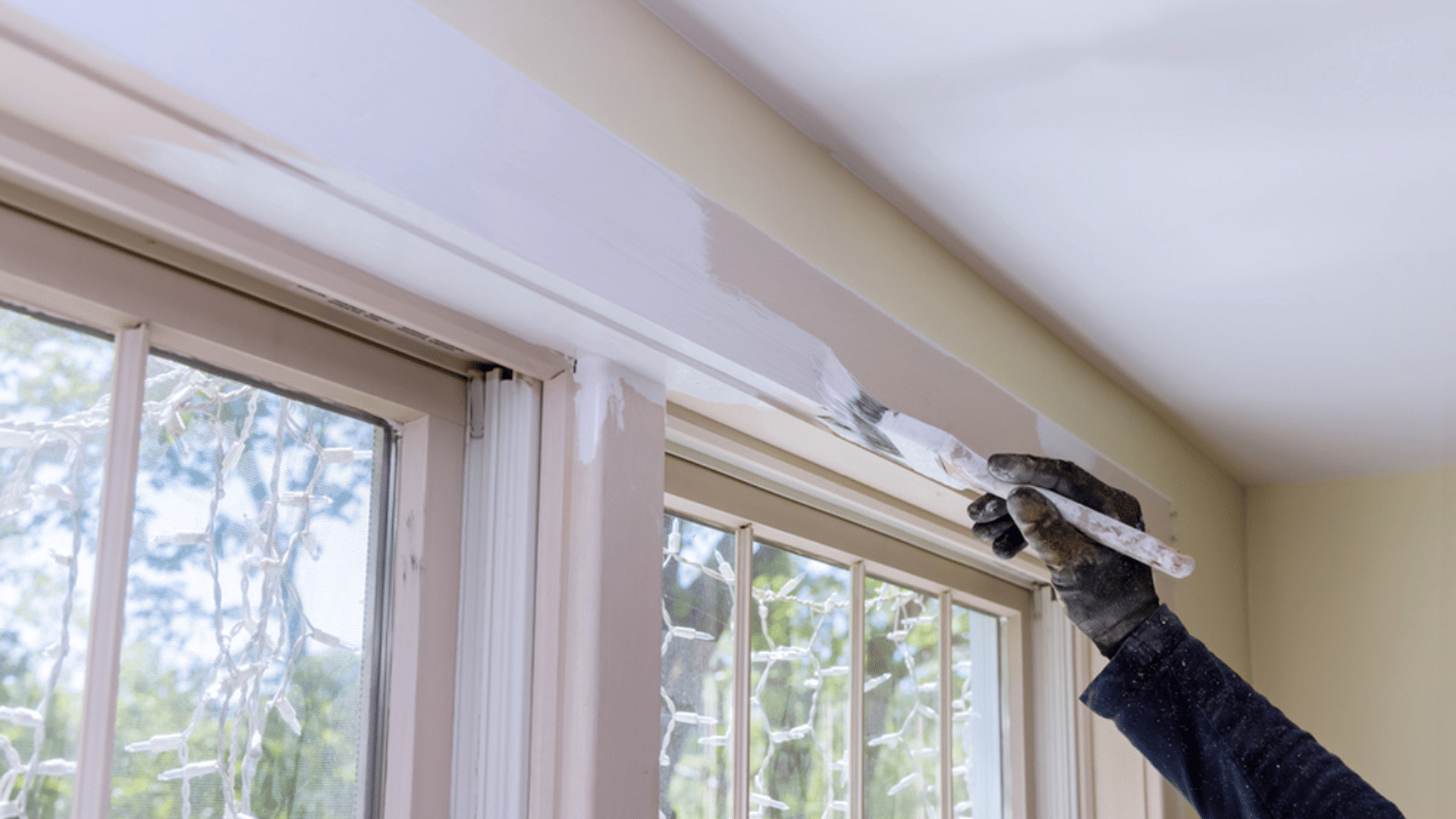
Achieving that smooth, professional finish on your trim and baseboards isn’t just for the experts. Follow these steps to get results that look like you hired a painting contractor:
Step 1 – Clean thoroughly to remove dust and oils: Wipe down all trim with a damp cloth and mild cleaner. For kitchen trim, use a degreaser to cut through cooking residue.
Step 2 – Light sanding for adhesion: Use fine-grit sandpaper (220 grit) to create tiny scratches that help paint grip better and smooth out old drips.
Step 3 – Use painter’s tape for clean lines: Apply quality tape where trim meets walls or floors. Press down firmly with a putty knife to seal the edge.
Step 4 – Angled brush or foam roller for precise edges: Use a 2-inch angled brush for corners and a small foam roller for long, straight runs of baseboard.
Step 5 – Apply thin, even coats and avoid overbrushing: Use less paint per coat and avoid going back over areas as they start to dry.
Pro Tips
|
Tips for Long-Lasting Results
Getting your trim paint to look good for years instead of months comes down to these simple but crucial steps:
- Use multiple coats for depth: Use two coats of paint minimum on all trim surfaces. This creates a thicker, more durable barrier against wear and tear.
- Allow proper curing time: Let paint cure fully before cleaning or replacing furniture against baseboards. This patience prevents dents, scuffs, and sticking.
- Save paint for touch-ups: Keep leftover paint labeled for future touch-ups. Even the best trim gets occasional damage, and matching paint perfectly later is nearly impossible.
- Schedule regular maintenance: Repaint every few years to refresh high-traffic zones. Catching these spots before bare wood shows through makes the job simpler.
Remember: The time you invest in these finishing steps pays off with trim that stays fresh-looking twice as long as rushed paint jobs.
Choosing the Right Trim Paint: A Summary
The right paint for your trim and baseboards makes a big difference in how your home looks and how long the finish lasts.
While it might cost more upfront, quality trim paint saves you money over time by holding up better against daily bumps and scrapes.
Remember to pick a formula that suits your needs—oil-based for maximum smoothness, water-based for easy cleanup, or hybrid options for the best of both.
Take time with preparation and application for results that look like professional work. Clean well, sand lightly, and apply thin coats with good tools for the best outcome. Keep some paint for quick fixes when needed.
Ready to start your trim project? Get the right paint, follow these steps, and your trim will stay fresh and clean for years to come.

